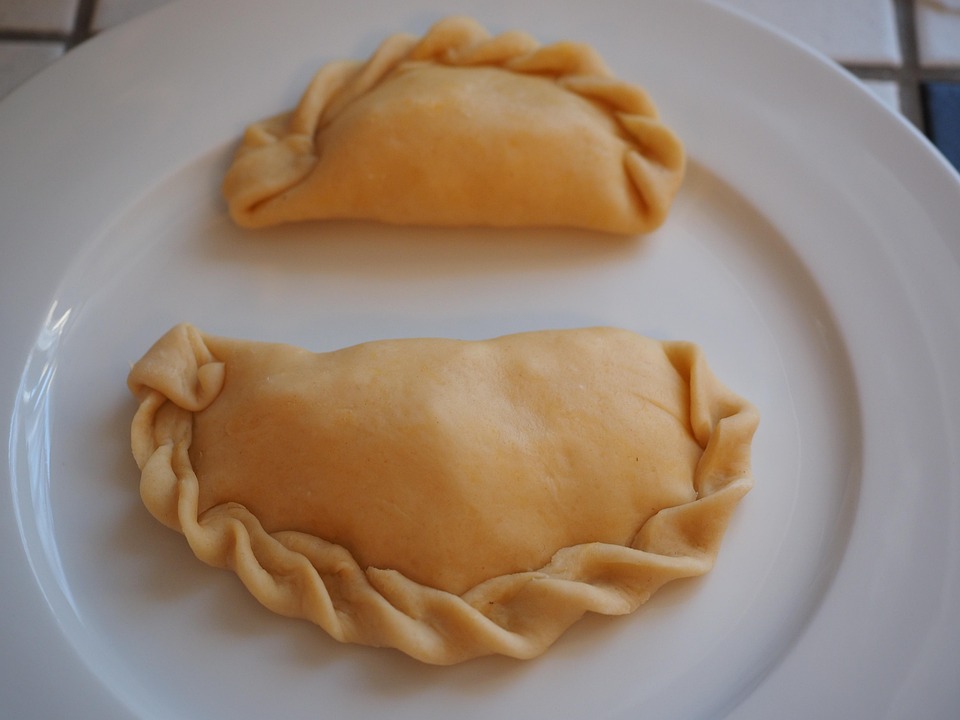Understanding how to eat for teens is essential for supporting their rapid growth, hormonal changes, and overall well-being during this pivotal stage of life. Proper nutrition not only fuels daily activities but also lays the foundation for lifelong healthy habits.
This guide explores the fundamental dietary needs of teenagers, offering practical advice on creating balanced meal plans, choosing nutritious snacks, staying well-hydrated, and integrating physical activity to promote optimal health and development.
Understanding Nutritional Needs for Teenagers

Adolescence is a critical period marked by rapid growth, hormonal changes, and increased physical activity. Proper nutrition during this stage is vital to support healthy development, enhance academic performance, and establish lifelong healthy eating habits. Recognizing the unique nutritional requirements of teenagers ensures they receive adequate fuel for their dynamic lifestyles and growth spurts.
Teenagers’ dietary needs vary considerably based on factors such as age, gender, and activity levels. As their bodies undergo significant transformations, their nutritional intake must adapt to sustain optimal physical and mental health. An informed approach to nutrition empowers teens to make mindful choices that support their overall well-being and developmental milestones.
Fundamental Nutritional Requirements for Teenagers
During adolescence, the body demands a balanced intake of essential nutrients to support rapid growth, hormonal development, and increased energy expenditure. These needs differ by age, gender, and activity level, emphasizing the importance of personalized nutrition plans. For instance, teenage boys often require more calories and protein than girls of the same age due to higher muscle mass development, while active teens engaging in sports may need additional energy and nutrients to fuel their physical activities.
Understanding the specific functions and sources of key nutrients helps in crafting a diet that promotes healthy growth and prevents deficiencies. The table below highlights the essential nutrients, their roles, primary food sources, and recommended daily intake for teenagers.
| Nutrient | Function | Food Sources | Daily Recommended Intake |
|---|---|---|---|
| Protein | Supports muscle growth, tissue repair, and immune function | Lean meats, fish, eggs, dairy products, legumes, nuts | Girls: 46-50 grams; Boys: 52-56 grams (depending on age and activity) |
| Calcium | Builds strong bones and teeth, prevents osteoporosis later in life | Dairy products, leafy green vegetables, fortified plant-based milks, calcium-fortified cereals | 1300 mg |
| Iron | Vital for oxygen transport and energy production | Red meats, spinach, lentils, fortified cereals | Girls: 15 mg; Boys: 11 mg |
| Vitamin D | Enhances calcium absorption, supports bone health | Sun exposure, fortified dairy products, fatty fish, egg yolks | 600 IU (15 mcg) |
| Vitamin C | Boosts immune function, aids in iron absorption | Citrus fruits, strawberries, bell peppers, tomatoes | 75-90 mg |
| Carbohydrates | Main source of energy for daily activities and brain function | Whole grains, fruits, vegetables, legumes | 45-65% of daily calories |
| Fats | Support cell growth, hormone production, and brain development | Healthy oils, nuts, seeds, avocados, oily fish | 20-35% of daily calories, emphasizing unsaturated fats |
Hormonal fluctuations during adolescence influence dietary needs by increasing the demand for certain nutrients like iron, due to menstruation in girls, and supporting hormonal production in both genders. This dynamic process necessitates a diet rich in diverse, nutrient-dense foods to adapt to these changing physiological requirements.
Building a Balanced Meal Plan for Teens
Creating a well-structured weekly meal plan is essential for ensuring teenagers meet their nutritional needs while enjoying a variety of foods. A balanced meal plan supports growth, development, energy levels, and overall health. It also encourages healthy eating habits that can last a lifetime. When designing such a plan, it is important to incorporate diverse food groups, appropriate portion sizes, and moderation to prevent overeating and promote optimal health.
Developing a balanced meal plan involves understanding the nutritional requirements specific to teenagers, including adequate intake of proteins, carbohydrates, healthy fats, vitamins, and minerals. It also requires planning meals that are appealing and manageable within a busy teen’s schedule. The following steps provide a clear guide to creating an effective weekly meal plan, along with practical examples and portion guidelines tailored for adolescents.
Step-by-Step Procedures for Creating a Weekly Meal Plan
- Assess Nutritional Needs and Preferences: Consider the age, activity level, and dietary preferences of teenagers. Consult dietary guidelines to understand recommended daily intakes of key nutrients.
- Plan for Variety and Balance: Ensure each day includes a mix of food groups—fruits, vegetables, grains, proteins, and dairy—covering all essential nutrients while avoiding monotony.
- Set Realistic Portion Sizes: Use age-appropriate serving sizes to prevent under- or over-nutrition, focusing on moderation especially for high-calorie foods.
- Incorporate Different Meal Options: Prepare multiple options for each meal to accommodate taste preferences and dietary restrictions, promoting flexibility and adherence.
- Schedule Meals and Snacks: Distribute meals and snacks evenly throughout the day, ensuring energy levels are sustained and preventing excessive hunger or overeating.
- Review and Adjust Weekly: Monitor the teen’s response to the meal plan, making adjustments based on feedback, activity levels, or health considerations.
Examples of Balanced Meal Options for Teens
Here are some wholesome and varied options for breakfast, lunch, dinner, and snacks that contribute to a balanced diet:
- Breakfast:
- Oatmeal topped with fresh berries and a dollop of Greek yogurt
- Scrambled eggs with whole-grain toast and a slice of avocado
- Smoothie with banana, spinach, low-fat milk, and chia seeds
- Lunch:
- Grilled chicken wrap with mixed greens and hummus, served with carrot sticks
- Quinoa salad with chickpeas, cucumber, cherry tomatoes, and feta cheese
- Turkey and cheese sandwich on whole-grain bread with a side of sliced apple
- Dinner:
- Baked salmon with steamed broccoli and brown rice
- Stir-fried tofu with assorted vegetables and soba noodles
- Lean beef chili with beans, served with a small whole-grain roll
- Snacks:
- Fresh fruit salad with a handful of nuts
- Low-fat yogurt with honey and granola
- Whole-grain crackers with cheese and cucumber slices
Portion Sizes for Different Food Groups in Teens
Proper portion sizes are crucial for maintaining a balanced diet and preventing overeating. The following table provides approximate serving sizes suitable for teenagers, based on dietary guidelines from reputable sources such as the USDA and the American Academy of Pediatrics.
| Food Group | Typical Portion Size for Teens | Examples |
|---|---|---|
| Fruits | 1 cup or equivalent | 1 medium apple, 1 banana, 1 cup berries, 2 small plums |
| Vegetables | 1 cup raw or ½ cup cooked | 1 cup raw spinach, ½ cup cooked broccoli, 1 large carrot |
| Grains | 1 ounce (28 grams) | 1 slice bread, ½ cup cooked rice or pasta, 1 small tortilla |
| Proteins | 3 ounces (85 grams) | ½ cup cooked beans, 1 egg, 2 tablespoons peanut butter, 3 oz lean meat or poultry |
| Dairy | 1 cup milk or yogurt, 1.5 ounces cheese | 1 cup low-fat milk, 1 cup yogurt, 1.5 oz cheese |
| Fats and Oils | Use sparingly | A small handful of nuts, 1 teaspoon olive oil |
Healthy Snack Ideas for Teenagers
Providing nutritious snacks for teenagers is essential to support their energy levels, concentration, and overall well-being throughout the day. As adolescents often have busy schedules filled with school, extracurricular activities, and social interactions, easily accessible and healthful snack options can make a significant difference in maintaining their health and focus.
Choosing the right snacks involves balancing taste, convenience, and nutritional value. Incorporating a variety of whole foods ensures teens receive necessary nutrients such as vitamins, minerals, fiber, and healthy fats. Both homemade and store-bought snacks can be part of a balanced diet, but understanding their benefits and drawbacks helps in making informed choices that align with health goals and lifestyle preferences.
Nutritious Snack Suggestions for Energy and Concentration
Teens require snacks that provide sustained energy and support mental alertness during school hours and extracurricular activities. Nutrient-dense options that combine complex carbohydrates, lean proteins, and healthy fats are ideal for maintaining blood sugar levels and preventing energy crashes.
- Greek yogurt with fresh berries and a sprinkle of granola: Offers protein, antioxidants, and fiber to boost energy and aid digestion.
- Mixed nuts and seeds: Provide healthy fats, protein, and vitamins that support brain function and satiety.
- Vegetable sticks with hummus: A crunchy, fiber-rich snack with plant-based protein and healthy oils.
- Whole grain crackers with cheese or nut butter: Combines carbohydrates and protein for sustained energy release.
- Banana with natural peanut or almond butter: A quick, portable snack rich in potassium and healthy fats.
- Hard-boiled eggs: An excellent source of complete protein and vital nutrients, easy to prepare in advance.
Homemade vs Store-Bought Snacks: Benefits and Drawbacks
Choosing between homemade and store-bought snacks involves considering factors such as nutritional content, convenience, cost, and control over ingredients. Each option offers unique advantages and potential limitations that influence snack choices for teenagers.
| Aspect | Homemade Snacks | Store-Bought Snacks |
|---|---|---|
| Advantages |
|
|
| Drawbacks |
|
|
Methods for Preparing Quick and Easy Healthy Snacks
Efficient preparation methods enable teenagers and their families to enjoy nutritious snacks without spending excessive time in the kitchen. The following approaches promote convenience while maintaining nutritional integrity:
- Batch preparing: Making large quantities of snacks such as energy balls, trail mix, or granola in advance allows for grab-and-go options throughout the week.
- Using simple ingredients: Combining readily available items like fruits, nuts, and whole grains minimizes preparation time and ensures freshness.
- Pre-cutting and portioning: Slicing vegetables or fruits and dividing them into individual containers or snack bags makes healthy choices quick and accessible.
- Overnight preparations: Preparing overnight oats or yogurt parfaits the night before ensures a nutritious breakfast or snack ready to consume in the morning or during breaks.
- Utilizing appliances such as blenders or food processors: Quickly blending smoothies or pureed dips streamlines snack creation while preserving nutritional value.
Adopting these methods encourages consistent consumption of healthy snacks, supporting teenagers’ nutritional needs and fostering lifelong healthy eating habits.
Addressing Common Dietary Challenges for Teens

Teenagers often face unique dietary challenges that can impact their health and well-being. As they navigate the complexities of growth, social influences, and lifestyle choices, establishing healthy eating habits becomes essential. Addressing these challenges involves implementing practical strategies to promote nutritious choices, reduce the consumption of unhealthy foods, and foster a positive relationship with food. By understanding these obstacles, parents, educators, and caregivers can better support teens in making informed decisions about their diet.It is common for teens to gravitate toward processed foods, sugary beverages, and fast food due to convenience, taste preferences, and peer influence.
These dietary patterns can lead to issues such as weight gain, nutrient deficiencies, and increased risk of chronic illnesses like diabetes and cardiovascular disease. Overcoming these challenges requires targeted approaches that empower teens to choose healthier options without feeling deprived or excluded.
Reducing Intake of Processed Foods, Sugary Drinks, and Fast Food
Efforts to minimize consumption of unhealthy foods involve both education and environmental modifications. Encouraging teens to read food labels helps them recognize added sugars, unhealthy fats, and artificial ingredients in processed foods. Replacing sugary drinks with water, infused water, or unsweetened beverages can significantly decrease sugar intake. Creating a home environment that limits the availability of fast food and processed snacks makes healthier choices more accessible.
Planning and preparing meals ahead of time can reduce impulsive decisions driven by hunger or peer pressure. Additionally, promoting the benefits of whole, unprocessed foods, such as fruits, vegetables, whole grains, and lean proteins, supports healthier eating patterns.
Encouraging Positive Eating Habits and Combating Peer Pressure
Peer influence plays a major role during adolescence, often impacting dietary choices. To foster positive habits, it is crucial to build an environment where healthy options are normalized and appealing. Open communication about nutrition benefits and addressing myths about dieting can help teens develop a balanced perspective.Offering supportive and non-judgmental guidance encourages teens to make their own informed choices. Involving them in meal planning and grocery shopping fosters ownership of their dietary habits.
Schools and community programs can also promote healthy eating through peer-led initiatives, cooking classes, and awareness campaigns, making nutritious choices more socially acceptable and attractive.
Effective Approaches to Motivate Teens to Choose Healthier Options
Motivating teens involves understanding their preferences and making healthy foods enticing. Incorporating variety, flavor, and presentation can make nutritious meals more appealing. For instance, using colorful vegetables in dishes or creating visually attractive fruit salads can enhance interest in healthy foods.Setting achievable goals, recognizing small successes, and offering positive reinforcement reinforce healthy behaviors. Sharing success stories of peers or role models who have adopted better eating habits can inspire motivation.
Additionally, allowing teens to participate in cooking and meal preparation not only builds skills but also increases their willingness to try new, healthier foods.
The Role of Hydration in Teen Nutrition

Maintaining proper hydration is a fundamental aspect of supporting a teenager’s growth, cognitive development, and physical activity levels. As adolescents experience rapid physical and mental changes, their fluid needs increase to sustain optimal body functions. Dehydration can lead to fatigue, concentration difficulties, and impaired athletic performance, making it essential for teens to prioritize regular water intake throughout the day.
Understanding the importance of hydration involves recognizing how fluids influence various bodily processes, including temperature regulation, nutrient transport, and waste elimination. Ensuring adequate hydration helps teens stay energized, improves focus during studies, and enhances their ability to participate actively in sports and other physical activities. Additionally, proper hydration supports healthy skin and digestion, contributing to overall well-being during this crucial developmental stage.
Monitoring Hydration Levels and Promoting Regular Drinking Habits
Encouraging teens to stay hydrated requires practical strategies that make fluid consumption a natural part of their daily routine. Monitoring hydration levels can be achieved through simple observations such as the color of the urine, which should be light yellow, indicating good hydration. Teens should be encouraged to drink fluids consistently, not just when they feel thirsty, as thirst can be a late indicator of dehydration.
Promoting regular drinking habits involves creating a supportive environment where access to water is always available. Setting specific goals, such as drinking a glass of water with each meal and snack, or carrying a reusable water bottle, can reinforce these habits. Educating teens about the benefits of hydration and the risks of dehydration helps foster awareness and responsibility for their health.
Additionally, integrating hydration reminders into daily routines and encouraging participation in sports or physical activities can further enhance fluid intake practices.
Hydration Options, Benefits, and Tips
| Beverage Option | Benefits | Hydration Tips |
|---|---|---|
| Water | Purest form of hydration, essential for all bodily functions, zero calories | Drink consistently throughout the day; carry a reusable water bottle; flavor with a slice of lemon or cucumber for variety |
| Milk (low-fat or skim) | Provides calcium, protein, and hydration; supports bone health | Include with meals or as a snack; opt for unsweetened varieties to reduce sugar intake |
| Herbal Teas | Hydrating and can be enjoyed hot or cold; caffeine-free options available | Limit added sweeteners; serve cold during warmer months for refreshment |
| Fruit-Infused Water | Enhances flavor without added sugars; provides vitamins from fruits | Use slices of berries, citrus, or herbs; prepare in advance for easy access |
| Sport Drinks | Replenish electrolytes lost during intense physical activity; contain carbohydrates for energy | Use sparingly; ideal for prolonged or intense exercise sessions; avoid excessive consumption to reduce sugar intake |
| Sugar-Sweetened Beverages (sodas, energy drinks) | Briefly provide hydration but often contain high sugar and caffeine levels | Limit intake; prioritize healthier options like water and milk; educate about their negative effects on hydration and overall health |
“Consistent hydration is a cornerstone of adolescent health, supporting everything from mental clarity to physical endurance.”
Incorporating Physical Activity with Eating Habits
Balancing physical activity with proper nutrition is essential for teenagers to support growth, development, and overall well-being. Regular exercise influences not only physical health but also impacts appetite regulation and nutritional requirements, making it crucial to integrate active routines with a balanced diet.
Understanding how exercise affects nutritional needs and adopting routines that harmonize physical activity with healthy eating habits can help teens achieve optimal health, improve energy levels, and foster lifelong healthy behaviors.
Exercise and Its Impact on Nutritional Needs and Appetite Regulation
Physical activity increases energy expenditure, requiring additional nutrients to fuel the body and support recovery. Regular exercise enhances muscle development, cardiovascular health, and bone strength, all of which demand higher intake of macronutrients such as carbohydrates, proteins, and healthy fats. Moreover, exercise influences appetite regulation by balancing hunger hormones, which can help prevent overeating or under-eating.
For teenagers, engaging in consistent physical activity can lead to improved metabolism, better weight management, and increased nutrient absorption. It is important for teens to consume nutrient-dense foods post-exercise to replenish glycogen stores, repair muscles, and maintain energy levels.
Routine Development for Balanced Diet and Physical Activity
Creating a structured routine that combines regular exercise with nutritious eating habits promotes overall health and prevents nutritional deficiencies. Teenagers should aim for daily physical activity, integrated with meals that meet their elevated energy and nutrient needs. Planning meals around workout schedules ensures optimal performance and recovery.
Encouraging teens to schedule workouts at consistent times, such as after school or during weekends, and pairing these with well-balanced meals, supports sustained activity levels and healthy growth. Hydration is also a key element, as proper fluid intake complements physical routines and aids in nutrient transport and waste elimination.
Activities Suitable for Teens and Their Dietary Considerations
Engaging in a variety of physical activities helps maintain motivation and ensures comprehensive fitness benefits. When choosing activities, it’s important to consider the dietary needs associated with each type of exercise to optimize performance and recovery:
- Running and Cycling: These cardiovascular activities require high carbohydrate intake for sustained energy. Consuming whole grains, fruits, and vegetables before exercise can enhance endurance.
- Team Sports (soccer, basketball, volleyball): These activities promote social interaction and physical fitness. Adequate protein consumption supports muscle repair, while hydration is vital to prevent fatigue and cramps.
- Strength Training and Resistance Exercises: These activities increase muscle mass. Protein-rich foods such as lean meats, dairy, or plant-based sources are essential post-exercise for muscle recovery.
- Yoga and Flexibility Exercises: These activities focus on balance and mental well-being. Maintaining a balanced diet with adequate hydration supports overall flexibility and muscle health.
- Swimming: A full-body workout that demands energy and hydration, emphasizing the importance of carbohydrate-rich foods and regular water intake to prevent dehydration.
Incorporating these activities into a weekly routine with attention to proper nutrition can help teens cultivate healthy habits that support their physical growth, mental well-being, and academic performance.
Creating Educational Resources for Teen Nutrition
Developing engaging and effective educational resources is crucial for promoting healthy eating habits among teenagers. As adolescents are at a formative stage where habits can influence lifelong health, it is essential to craft content that resonates with their interests, learning styles, and evolving preferences. Interactive and visually appealing materials can significantly enhance their understanding and motivation to make healthier choices.
High-quality educational resources should combine factual information with engaging formats to capture teens’ attention and facilitate active learning. Tailoring content to reflect their cultural backgrounds, daily experiences, and popular trends ensures relevance and encourages sustained engagement. Incorporating multimedia elements and practical activities can transform traditional nutrition education into an enjoyable and impactful experience.
Ways to Develop Engaging Content for Teen Nutrition
Creating engaging content involves blending evidence-based information with creative presentation methods. This approach ensures teens not only receive accurate nutrition guidance but also find the material relatable and motivating to apply in their daily lives.
- Utilize storytelling techniques that relate nutrition concepts to real-life scenarios, such as managing school lunches or sports nutrition.
- Incorporate interactive elements like quizzes, challenges, or games that reinforce key messages and encourage participation.
- Leverage social media platforms popular among teens by sharing short videos, infographics, and memes that highlight healthy eating tips.
- Encourage peer-led activities or testimonials to foster a sense of community and shared responsibility for health.
Ideas for Visual Aids, Infographics, and Recipes for Teens
Visual tools can simplify complex nutritional information and make learning more appealing for teenagers. Well-designed infographics and colorful recipes tailored to their tastes can increase interest and retention.
- Infographics: Develop visually engaging charts showing the benefits of vitamins and minerals, or comparing healthy versus unhealthy snack options using bright colors and concise data.
- Recipes: Create simple, nutritious recipes that align with teen preferences, such as smoothies, wraps, or veggie-packed pizzas, with step-by-step images to guide preparation.
- Visual Aids: Use diagrams of portion sizes, food groups, and balanced plates to reinforce understanding of serving recommendations.
- Interactive Charts: Design digital tools allowing teens to customize meal plans based on their favorite foods and dietary needs, fostering personalized learning.
Organizing Effective Nutrition Education Content
Structured and diverse formats ensure comprehensive coverage of nutritional topics while maintaining engagement. Using various formats and organizing content by relevant themes allow for targeted learning experiences.
| Format | Topics Covered | Purpose |
|---|---|---|
| Infographics | Vitamins and minerals, Food groups, Portion sizes | Visual summaries for quick understanding and retention |
| Video Tutorials | Meal preparation, Healthy snacking, Hydration tips | Demonstrate practical skills and motivate action |
| Interactive Quizzes | Myths about nutrition, Dietary choices, Label reading | Assess knowledge and reinforce learning in an engaging way |
| Recipe Guides | Easy nutritious snacks, Breakfast ideas, Budget-friendly meals | Provide practical tools for implementing healthy habits |
| Print Materials | MyPlate charts, Shopping lists, Weekly meal planners | Support offline learning and daily application |
Epilogue

In conclusion, adopting healthy eating habits during adolescence is crucial for supporting growth, enhancing cognitive function, and fostering a positive relationship with food. Empowering teens with knowledge and practical strategies can set the stage for a healthier future.